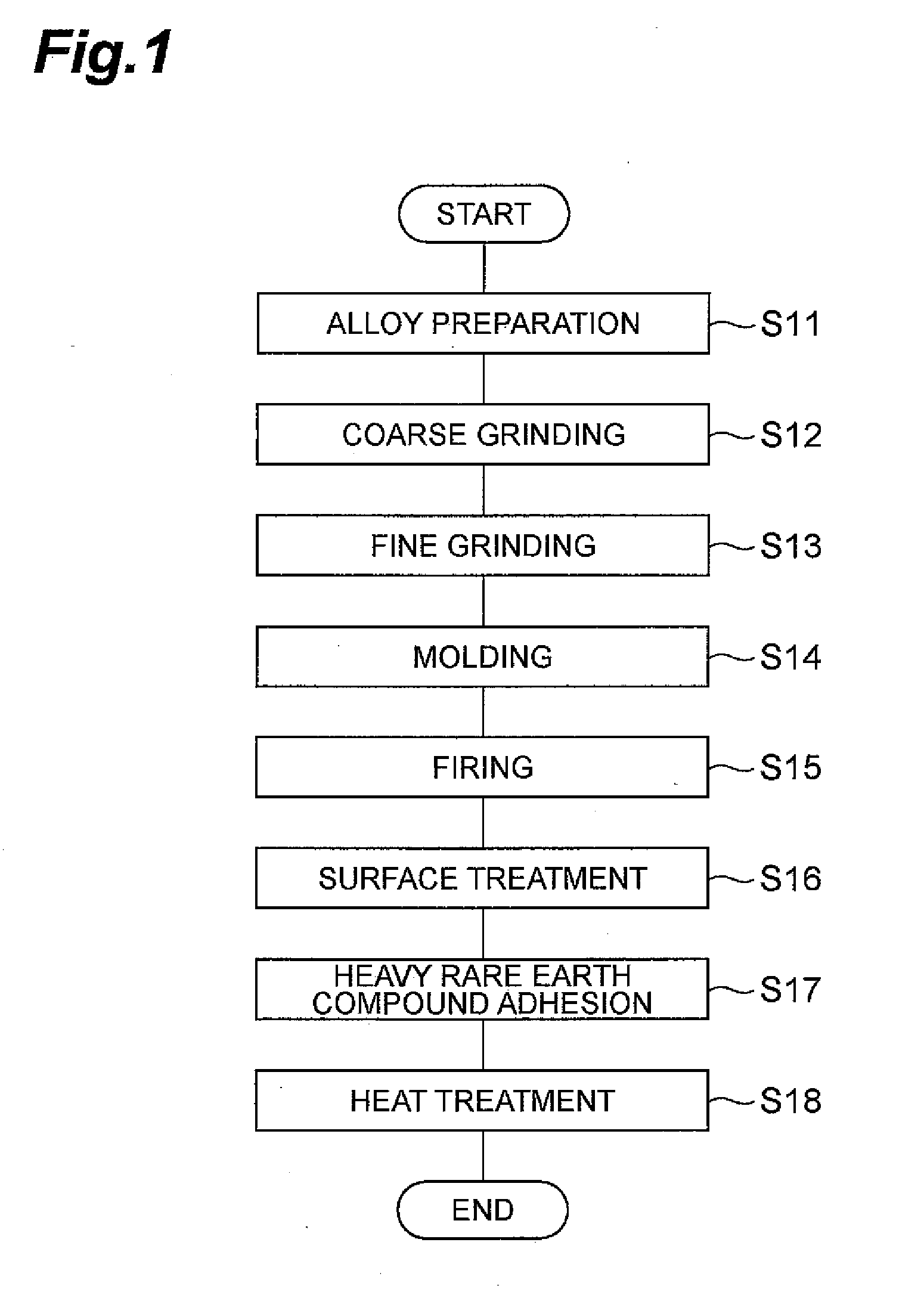Process for producing magnet
a technology of producing process and magnet, which is applied in the manufacture of permanent magnets, coatings, electrical devices, etc., can solve the problems of complicated production conditions and difficulty in producing stable magnetic properties at a high yield, and achieve satisfactory diffusion, improve the corrosion resistance of the obtained magnet, and the effect of sufficient squareness ratio
- Summary
- Abstract
- Description
- Claims
- Application Information
AI Technical Summary
Benefits of technology
Problems solved by technology
Method used
Image
Examples
example 1
[0042]First, a starting alloy was prepared to produce a rare earth magnet having the composition 23.50 wt % Nd-3.50 wt % Dy-3.30 wt % Pr-0.450 wt % Co-0.18 wt % Al-0.06 wt % Cu-0.97 wt % B-bal.Fe. Two starting alloys were prepared, a main phase alloy primarily for formation of the main phase of the magnet, and a grain boundary alloy primarily for formation of the grain boundary. Next, the starting alloys were subjected to coarse grinding by hydrogen grinding and then jet mill grinding with high pressure N2 gas to produce fine powders each with mean particle sizes of D=4 μm.
[0043]The fine powder for the main phase alloy and the fine powder for the grain boundary alloy were mixed in a proportion of 95:5, respectively, to prepare a magnetic powder as the starting powder for the rare earth magnet. The magnetic powder was then used for magnetic field molding under conditions with a molding pressure of 1.2 t / cm2 and an orienting magnetic field of 15 kOe, to obtain a compact. The obtained ...
examples 2-6
[0047]Rare earth magnets were produced in the same manner as Example 1, except that the DyFe composition was changed to the compositions shown in Table 1.
example 7
[0048]A rare earth magnet was produced in the same manner as Example 1, except that DyNdFe having the composition shown in Table 1 was used instead of DyFe.
PUM
| Property | Measurement | Unit |
|---|---|---|
| particle size | aaaaa | aaaaa |
| particle size | aaaaa | aaaaa |
| particle size | aaaaa | aaaaa |
Abstract
Description
Claims
Application Information
 Login to View More
Login to View More - R&D
- Intellectual Property
- Life Sciences
- Materials
- Tech Scout
- Unparalleled Data Quality
- Higher Quality Content
- 60% Fewer Hallucinations
Browse by: Latest US Patents, China's latest patents, Technical Efficacy Thesaurus, Application Domain, Technology Topic, Popular Technical Reports.
© 2025 PatSnap. All rights reserved.Legal|Privacy policy|Modern Slavery Act Transparency Statement|Sitemap|About US| Contact US: help@patsnap.com

